Noise Cancellation or active noise cancellation. It’s a term that’s constantly tossed around. You might know, a bit, about noise cancellation through extensive marketing done by premium noise-cancelling headphone brands like Sony and Bose.
That this noise cancellation tech helps with the less background noise when we are listening to music via our headphones. Yeah, that’s correct somewhat, but it’s not enough.
ANC (Active noise cancellation) seems to one of the important factors to be considered when it comes to buying headphones or earphones. You can also find this noise-cancelling technology in almost all smartphones these days.
Let’s just dive more into the topic of noise and noise cancellation.
We should start with a something fundamental and basic.
What is sound? But in a simple way.
Sound is caused when a vibrating object or source creates variation in pressure of air particles.
This air with changing pressure when hits our ear, it is perceived by our brain as sound
Have you seen a slinky toy? If not, here is the GIF of it.
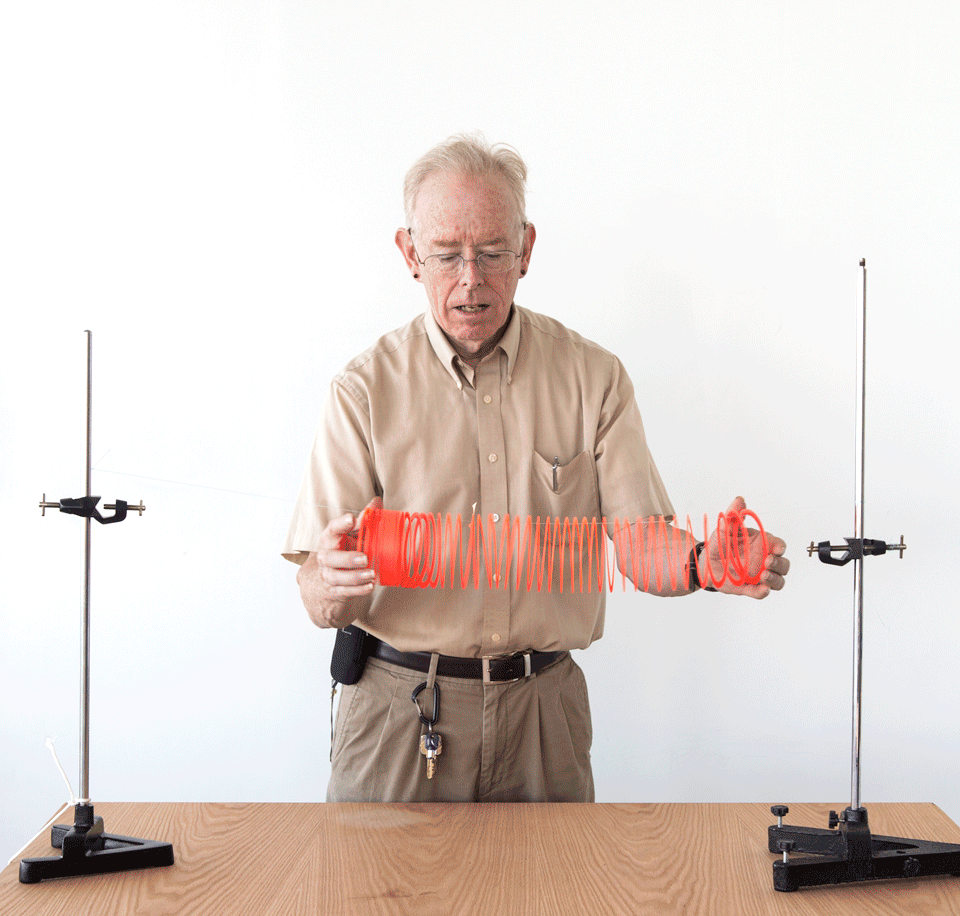
Notice, how it moves from one side to other side. Sound works similarly.
So, every sound in this universe starts with a vibration.
In other words, sound is vibration in air molecules which travels in waves. When these particles move rapidly, they cause this vibration energy to transfer to our eardrums. Our brain interprets these vibrations as sound.
Sound travels through a medium (which can be air, water or other material).
Sound travels in a medium in the form of waves.
Now, what is a wave? How is this wave created?
Wave is simply a disturbance that carries in a medium from one location to another. Take slinky wave as example from above video.
Let’s understand wave in terms of sound. The variation in pressure of air creates a certain disturbance.
This disturbance can be represented in a form which can be called as wave.
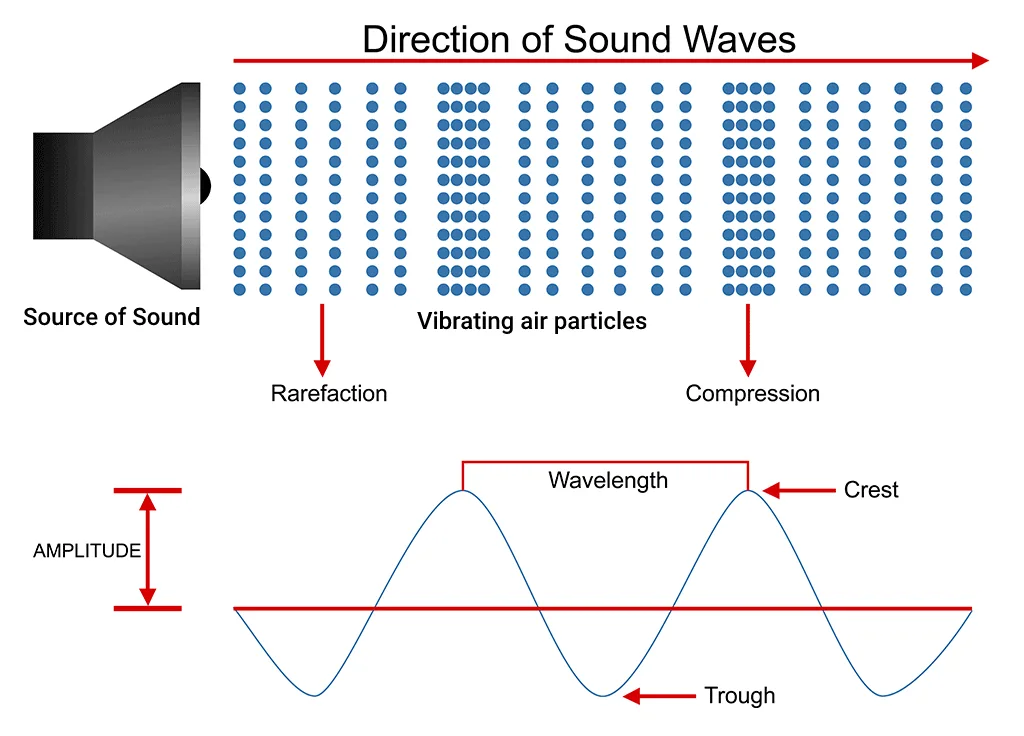
Just like a mobile phone has specifications like RAM, storage, processor etc.
A wave also has certain characteristics like frequency, wavelength, and amplitude etc.
Some terminologies of wave
Frequency – the speed at which a wave propagates. Frequency is measured in hertz (Hz) and cycles per second (or cps).
Amplitude
Wavelength – the distance between identical points (adjacent crests) in the adjacent cycles of a waveform
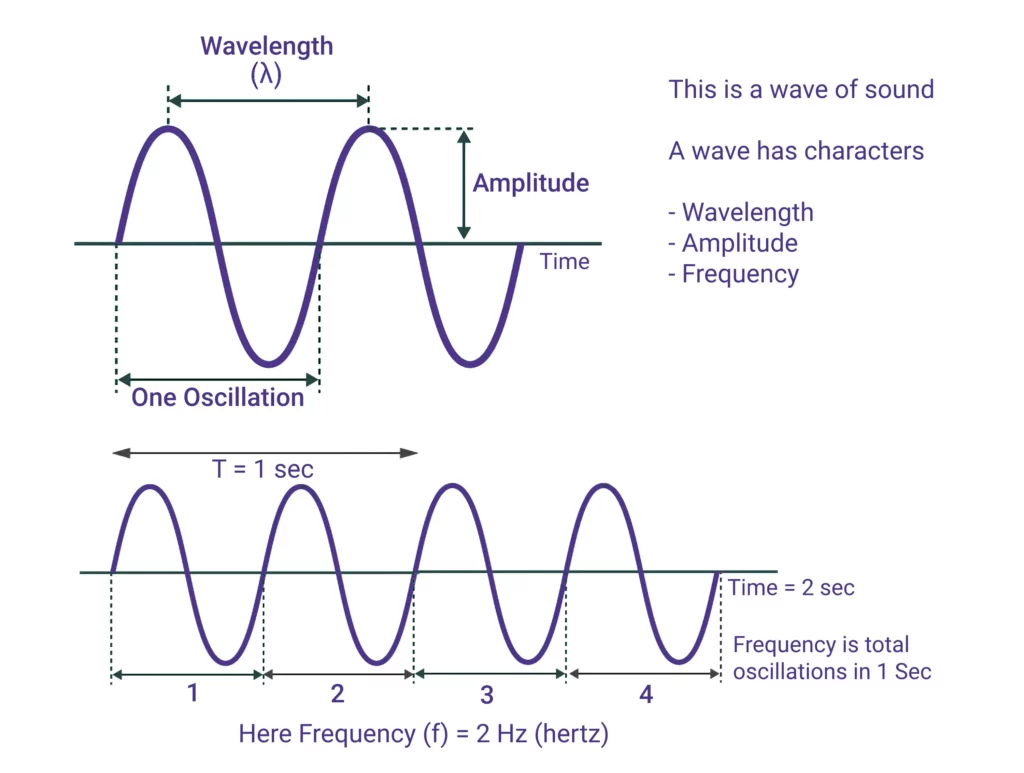
A high note sung by someone close to you could easily go beyond 1Khz, depending on their vocal cords’ strength.
Sounds typically range from 20 Hertz (Hz) up to 20 kilohertz (kHz), though higher tones can sometimes pass through with ease. Anything above 20 kHz is considered ultrasound and isn’t audible to us.
What is noise?
Noise is unwanted random sound waves coming from multiple sources. This simply means we consider sounds which are not apart from the main sound but are there in our surroundings as noise.
There are various types of noises –
Ambient noise includes things like cars honking, planes taking off, trains passing by, machines running, etc. Other types include machine noise, construction noise, or office noise.
Most noise occurs naturally, and therefore cannot be fully eliminated by electronics.
However, humans have become accustomed to listening to certain levels of noise every day. Exceeding these thresholds is uncomfortable for some people, especially after prolonged exposure. Therefore, reducing noise to tolerable limits is essential.
What is noise-cancelling?
This noise reduction can be done by introducing a physical barrier to inhibit surrounding noise. This type of noise-cancelling is called passive noise reduction.
- Passive noise cancellation
- Active noise cancellation
What is Passive Noise cancellation?
This noise reduction can be done by introducing a physical barrier to inhibit surrounding noise. This type of noise-cancelling is called passive noise reduction.
So, in actual it’s Passive noise isolation and not passive noise cancellation
What is ANC (active noise-cancelling)?
In short, active noise cancellation refers to an electronic device or method which actively cancels out ambient noise.
This means instead of using a passive technique where you simply wear noise-canceling headphones without any additional equipment, active noise cancellation uses something called “electronic hearing” by playing artificial versions of the surrounding noises through your phone speakers or headphones.
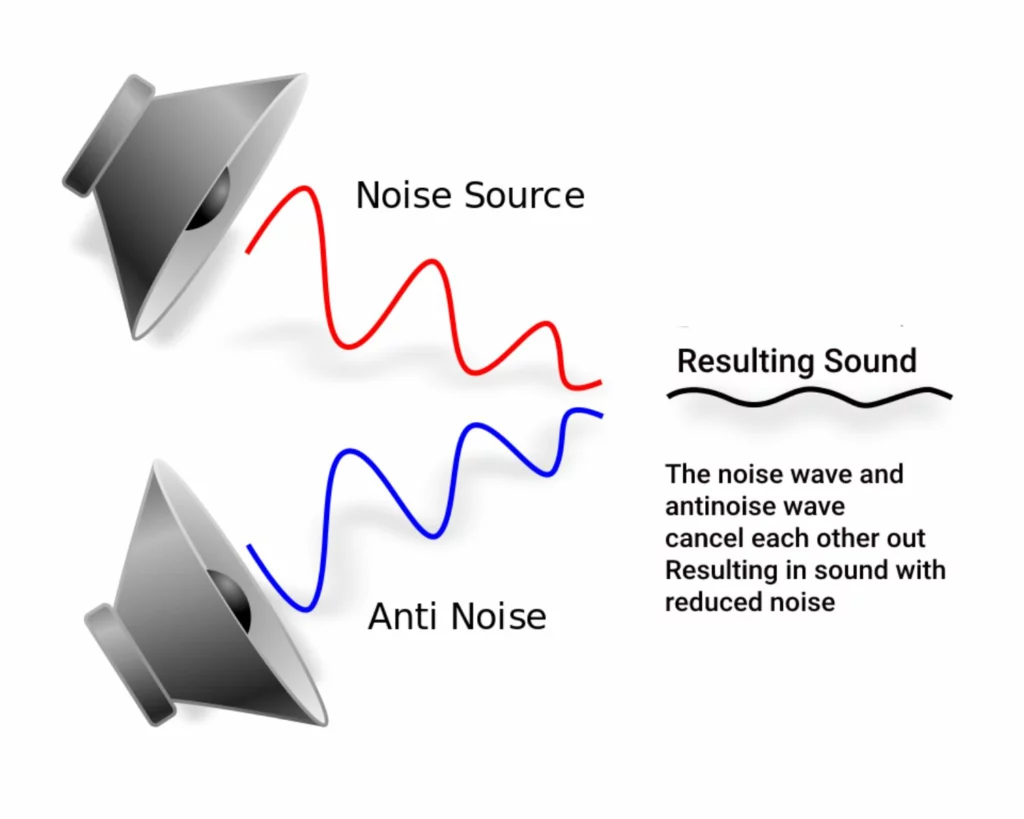
It’s also known as non-linear predictive coding (NLPC). The technology was first developed in 1991 at MIT by Professor John Krick who worked there until 2013. He then founded his own company named Sound Technology Ltd. In 2010, he received US$6 million from Google Ventures. NLPC technology is now owned by Harman International Industries Inc., headquartered in Germany.
How does noise-cancelling headphones work?
Modern headphones use a combination of passive noise reduction and active noise-cancelling technology.
With active noise cancellation, engineers use microphones and digital signal processors to take recordings of these different audio signatures (signal changes caused by ambient sounds), turn them into computerized models, and create new audio signal that simulate the original ones. Thus, waves cancel each other. Thus, effectively blocking external noise.
Then they play back the modified version of the recording to fool human ears into thinking they’ve just listened to purer forms of sound.
The actual mechanism behind ANC differs between manufacturers, but basically the goal is to generate frequencies similar enough to the recorded background noise such that humans won’t notice a significant difference. This way, the listener can enjoy peace and quiet while not having to deal with unwanted noise, annoying disturbances. Thus, improving the sound quality of the device with noise reduction.
While many companies claim to offer ANC, only few brands deliver true ANC capabilities. For example, Bose claims to support ANC across all their products, including over-ear headphones, wireless headphones, and more. Sony offers ANC headphones via some premium wireless headphones. On other hands, Samsung doesn’t even provide ANC functionality at all.
Most phones don’t come with ANC either because of cost constraints. So, make sure to check whether your favorite brand provides ANC before buying their latest product.
There are several ways to reduce noise. One popular approach is to design headphone units with built-in noise-reducing features.
Another option is to buy specialized headphones designed to block specific frequencies that contribute to environmental noise pollution.
Yet another solution is to combine ANC with technologies like bone conduction. Bone conductors vibrate skull bones directly instead of relying on outer ear structures. They can thus achieve greater sensitivity compared to traditional headsets.
For example, Sennheiser launched the world’s first consumer ANC headset in 2014, called Momentum Wireless Headset. Momentum delivers 10dB of noise reduction compared to other competing solutions available in the market.
Another interesting fact is that ANC technology isn’t always effective against low frequencies. Some experts believe that ANC devices struggle to cut down lower frequencies because they aren’t amplified much during the conversion process. Moreover, ambient noise tends to persist long after voices or instruments stop producing sound. This is partly why ANC doesn’t help with TV shows played on home theaters. To eliminate television static, users need special amplifiers.
Now you know how ANC systems work. Next question might be – how does it affect my sound quality of music I am listening? After all, ANC should allow me to listen to music without disturbing sounds. Well, that depends on how well ANC fits your needs.
Noise Cancellation tech differs for different brands
Some headphones are equipped with basic ANC (active noise cancelling)functions. While others require advanced software optimization to get rid of noisy elements effectively. Furthermore, there’s a wide variety of ANC standards. Depending on the standard, ANC performance varies considerably.
To illustrate, consider a pair of $100 Beats Studio3 headphones with ANC turned on versus a pair of $300 Creative Labs Elite 85h headphones with ANC activated. Both sets of headphones feature ANC. However, the latter set performs substantially better than the former, thanks to superior engineering and hardware.
Since ANC or active noise-cancelling relies heavily on digital processing, the algorithm plays a critical role in determining how efficiently it reduces noise. Poorly optimized algorithms tend to introduce artifacts, resulting in poor output. Conversely, highly optimized algorithms produce cleaner results.
However, ANC alone isn’t sufficient for perfect sound fidelity. Users often prefer headphones that offer a combination of ANC and EQ modes to enhance bass response and tweak mids accordingly.
Many brands nowadays offer hybrid ANC/EQ mode options. For instance, Monster’s best selling model, HyperX Cloud Alpha Gaming Headset, allows users to switch between three different modes based on game type and environment. Mode selection takes less than 60 seconds and requires minimal effort from the user.
One downside of ANC is battery consumption. Active noise-cancelling headphones consume extra power to perform acoustic simulations. Battery life varies greatly among various brands.
As mentioned earlier, binaural beats improve sleep patterns and induce deep relaxation. Unfortunately, research suggests that listening to them too late at night can negatively impact health.
Here are some of the active noise-cancelling headphones in market right now
Below is a list of current examples of noise-cancelling headphones. We’ll cover everything from affordable budget audiophile cans to cutting-edge tech.
Anker Astro E5 ($60): Anker’s cheapest ANC model makes a great entry point for anyone interested in getting started with ANC. Its 5mm driver produces accurate trebles and midtones with punchy highs and lows.
Apple AirPods Max
Bose quietcomfort
Bowers & Wilkins P7 Wireless ($400): Pricier than competitors, the B&W P7 boasts top-notch build quality, superb acoustics, and impressive ANC performance. Many reviewers praise its ability to isolate conversations despite exterior interference.
Sony WH 1000XM5 ($500-$600): Pricier than rivals, the Sony WH1000XM4 promises outstanding ANC performance for casual listeners. The unit utilizes adaptive DSP processing to tune itself automatically according to input source and content.
Sennheiser Cx 400i True Wireless Earbuds ($200): Though priced roughly half of competing offerings, the Sennheiser CX 300i earbud packs decent ANC capability. Plus, the buds themselves boast exceptional battery life and
Does noise cancellation actually work?
Noise cancellation headphones block background noise without sound. This reduces noise in noisy areas or shops. They are also very useful for noises from the environment and repetitive noises.
Can noise cancelling damage hearing?
How do you avoid sound cancellation when you hear something? Overall the noise cancellation feature of the headset has no detrimental effects on our sound quality. ANC can sometimes hear hissing sounds, however that’s the whole point. For some it may cause irritation and may lead to dizziness or headache.
Does noise cancellation cancel everything?
This doesn’t happen perfectly. The headphones do not produce noise or can reduce sound. The crest and trough does not disappear completely. The best noise cancelling headphones reduce noise and works best when using low-frequency droning sounds.
Noise Canceling headphones come in many shapes and sizes, each designed to deliver superior sound while blocking external noises. There are three primary types of Noise Canceling Headphones; Feedback, Feed Forward, and Hybrid. Knowing what kind of Noise Canceling headphone works best for you will help you pick the perfect pair. For example, if you notice that your headphones seem “temperamental” then switching to another model may solve this issue. However, if you hear too much outside noise, you may benefit from upgrading to a higher end model. Keep reading below to learn more about how to select the perfect pair of Noise Canceling Headphones.
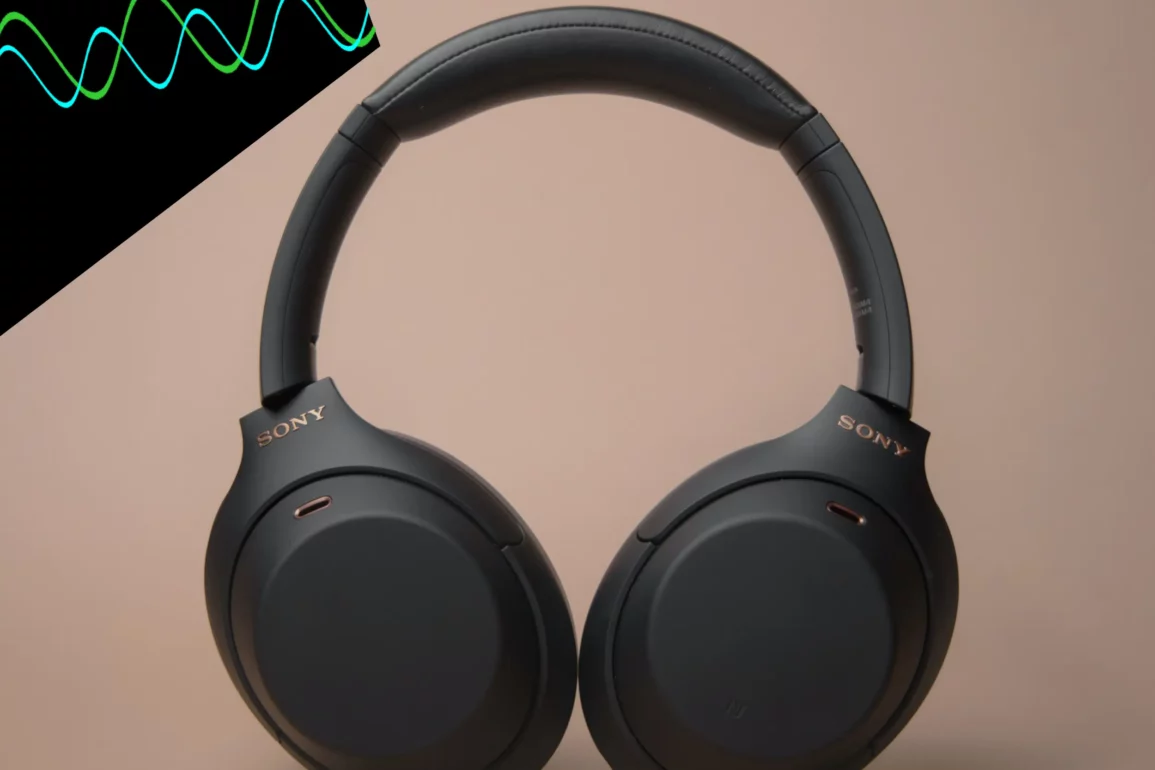
Leave a Reply
You must be logged in to post a comment.